
The Best Exercises for a Complete Back Workout

The back isn't only one of the body's biggest and strongest body parts, it's also the most complicated in terms of being a series of interconnected muscle groups. For the purposes of this feature, we're dividing the back into its four main regions:
- Upper and outer lats
- Lower lats
- Middle back
- Lower back
Each area requires specific stimulation via the exercises and angles of attack used, and we'll show you the two best back exercises for each.
With this menu you can customize your own back workout by choosing one exercise from each category to create a total program. Or if one region is lagging, you can pick additional movements that hit that area only. Either way, fully understanding which back exercises hit which portions of your back will allow you to build shape (in particular the V-taper), thickness, and width.
Note: Many of the exercises we include here do not isolate, but rather emphasize, certain areas of the back musculature.
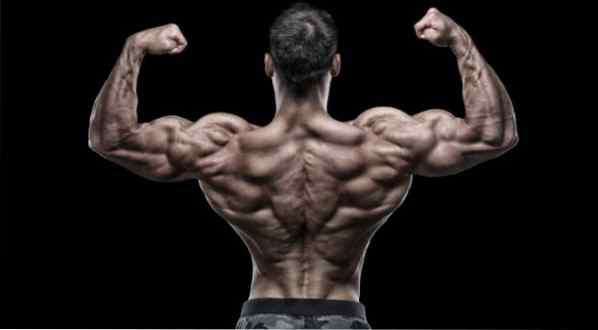
The Bigger, Stronger Back Workout
Get a more substantial back in four weeks with this training program targeting every muscle system b…
Read articleArea 1: Upper/Outer Lats
Use moves in which you utilize a wide grip, typically outside your shoulders, which develop the area that makes up your V-taper. You'll usually pull from an angle above your head or perpendicular to your body.
Best exercises: Pullup (wide grip), Bentover Barbell Row (wide grip)
Pullup (wide grip)
- Grasp the bar with an overhand grip. Fully extend your arms and relax your shoulders to stretch your lats in the bottom position.
- As you pull up, visualize keeping your elbows out to your sides and pulling them down to raise yourself while contracting your lats.
- Pull yourself up as high as possible to fully stimulate your lats.
- If you can't make it all the way up, consider enlisting the help of a spotter or use an assisted pullup machine.
Target tip: To really stress the upper/outer lats and teres major in the bottom position, squeeze your shoulder blades together as you hang with your arms fully extended.
Bentover Barbell Row (wide grip)
- Don't stand on a flat bench or platform to increase your range of motion; you're more likely to round your low back at the bottom. If you do need greater range of motion, use smaller plates to allow you to clear the floor rather than trying to balance yourself on a flat bench.
- Using a wider-than-shoulder-width grip allows you to keep your elbows out to your sides and pull them back as high as possible for a full contraction.
- Keep your knees bent and remain in the bent-over position throughout. It's easy to rise from this position when using heavy weights, but that recruits other muscle groups to assist in the move.
Target tip: To target those outer lats and teres major, pull the bar high toward your upper abs.
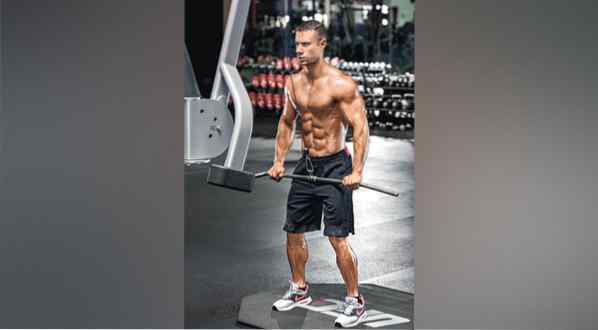
Per Bernal
Area 2: Lower Lats
Use reverse-grip moves and close-grip pullups/pulldowns to more strongly emphasize the lower lat area. One of the few single-joint lat moves, the straight-arm pulldown, does this as well.
Best exercises: Reverse-Grip Pulldown, Straight-Arm Lat Pulldown
Reverse-Grip Pulldown
- Take an underhand, shoulder-width grip. This allows you to pull your elbows back as far as possible, maximally stimulating the back muscles.
- Keep your torso upright and a slight arch in your back as you fully extend your arms at the top. Keep your chest out and flexed throughout the move; this helps concentrate more stress on the back muscles.
- Pull your elbows down and back as far as you can until the bar approaches your upper pecs. Squeeze your shoulder blades together at the point of peak contraction.
Target tip: To focus in on those lower-lat fibers, keep your chest high and your back arched. As you pull the bar down, bring it toward your lower chest for a better contraction.
Straight-Arm Lat Pulldown
- Grasp an overhead lat bar and stand far enough back from the station to keep your arms nearly straight (with just a slight bend in your elbows) throughout the movement.
- Pull the bar down in an arc with straight arms until it touches your upper thighs. Concentrate on feeling the movement in your lats; your arms should act only as levers.
- Movement should take place at only the shoulder joints.
Target tip: For optimal stimulation of the lower lats, don't just stop when the bar touches your thighs at the bottom-actually push the bar back into your thighs and squeeze your lats as hard as you can.
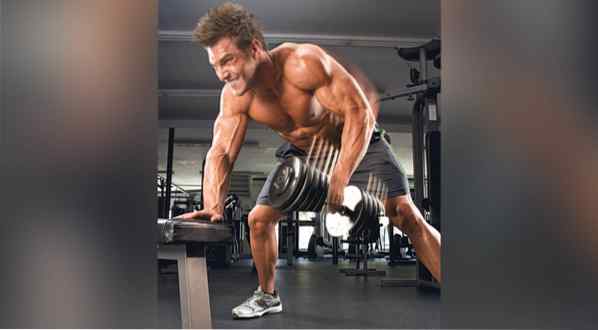
Ian Logan
Area 3: Middle Back
Use close- and medium-grip rowing moves in which you pull the bar, dumbbell, or handle into your midsection or sides to best build back thickness.
Best exercises: One-Arm Dumbbell Row, Close-Grip Seated Cable Row
One-Arm Dumbbell Row
- Lean forward at the waist and place your right knee and right hand on a flat bench.
- Keep your left foot flat on the floor and hold a dumbbell in your left hand. Let the weight hang straight down and slightly forward with your arm fully extended.
- Pull the dumbbell toward your hip, keeping your elbow close to your side.
- Keeping your back flat and abs tight, pull your elbow as high as you can. At the top, squeeze your shoulder blades together, then lower the weight along the same path.
- Repeat for reps, then switch arms.
Target tip: In the bottom position, hold the dumbbell slightly forward from your shoulder; as you go through the rep, pull it up and back.
Close-Grip Seated Cable Row
- Keep a slight bend in your knees to reduce pressure on them and maintain better balance.
- Though you might think leaning forward allows a greater range of motion, keeping your torso upright hits the middle back more while also minimizing stress on the lumbar region.
- Keep a slight arch in your low back at all times.
- Pull your shoulders and elbows back as far as possible so the bar touches your midsection.
Target tip: Hold the peak contraction for a second or two and squeeze your shoulder blades together for optimal stimulation.
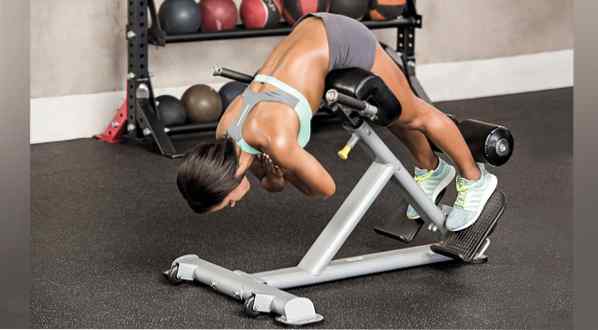
Per Bernal
Area 4: Lower Back
Use moves in which you bend at the waist (not the hips, which work glutes and hams) to work the low-back muscles, a critical area to strengthen to prevent low-back pain.
Best exercises: Back Extension, Stiff-Legged Deadlift
Back Extension
- Once you're situated on the bench, cross your arms over your chest or behind your head (this is more difficult); alternatively, you can hold a weight plate close to your chest to increase the intensity.
- Slowly bend at the waist as far as you can, rounding your back as you go.
- Contract your low-back muscles to raise your torso until you reach the starting position. Don't use a ballistic motion, and avoid going too high; contrary to what some people call this move, hyperextending your back isn't a good idea.
Target tip: Set up the back extension bench so that your hips are fully supported. This prevents movement at the hips and focuses the force on the lower-back muscles.
Stiff-Legged Deadlift
- The bar comes closer to the floor in the stiff-legged version than the romanian deadlift, a range of motion that works the lower back more.
- As you bend at the waist, push your glutes back and allow the bar to hang freely straight down from your shoulders. Your legs should be straight.
- Keep your lower-back muscles contracted throughout as you resist the weight's descent.
- Push your hips forward as you rise. Stand straight up without leaning backward at the top. The bar should rest across the top of your thighs.
- Concentrate on pulling with your back and hip muscles, not your arms, when raising your torso.
Target tip: As opposed to the Romanian deadlift, allow your lower back to round slightly in the bottom position.
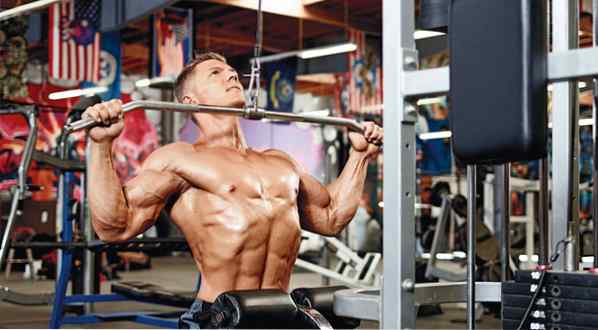
Dustin Snipes / Pavel Ythjall
Building Your Back Workout
- Include one exercise that targets each area of your back in your routine.
- To train for mass, after your warm-up sets, do 2-3 sets in the 8-12-rep range.
- For strength, go heavy with low-rep sets (4-7 reps).
- For muscle definition and endurance, go lighter and do high-rep sets (15-25 reps).
A mass workout that focuses on building outer lat width but still hits all areas of the back would look something like the chart below (not including warm-up sets). Rest 1-2 minutes between each set.
| Exercise / Target Area | Sets | Reps |
| Pull-Up (wide grip) / Outer Lats | 3 | 12, 10, 8 |
| Bentover Barbell Row (wide) / Outer Lats | 3 | 8, 10, 12 |
| Close-Grip Seated Cable Row / Middle Back | 3 | 8, 10, 12 |
| Reverse-Grip Pulldown / Lower Lats | 3 | 12, 10, 8 |
| Back Extension / Lower Back | 3 | 12, 12, 12 |



Nimeni nu a comentat acest articol încă.